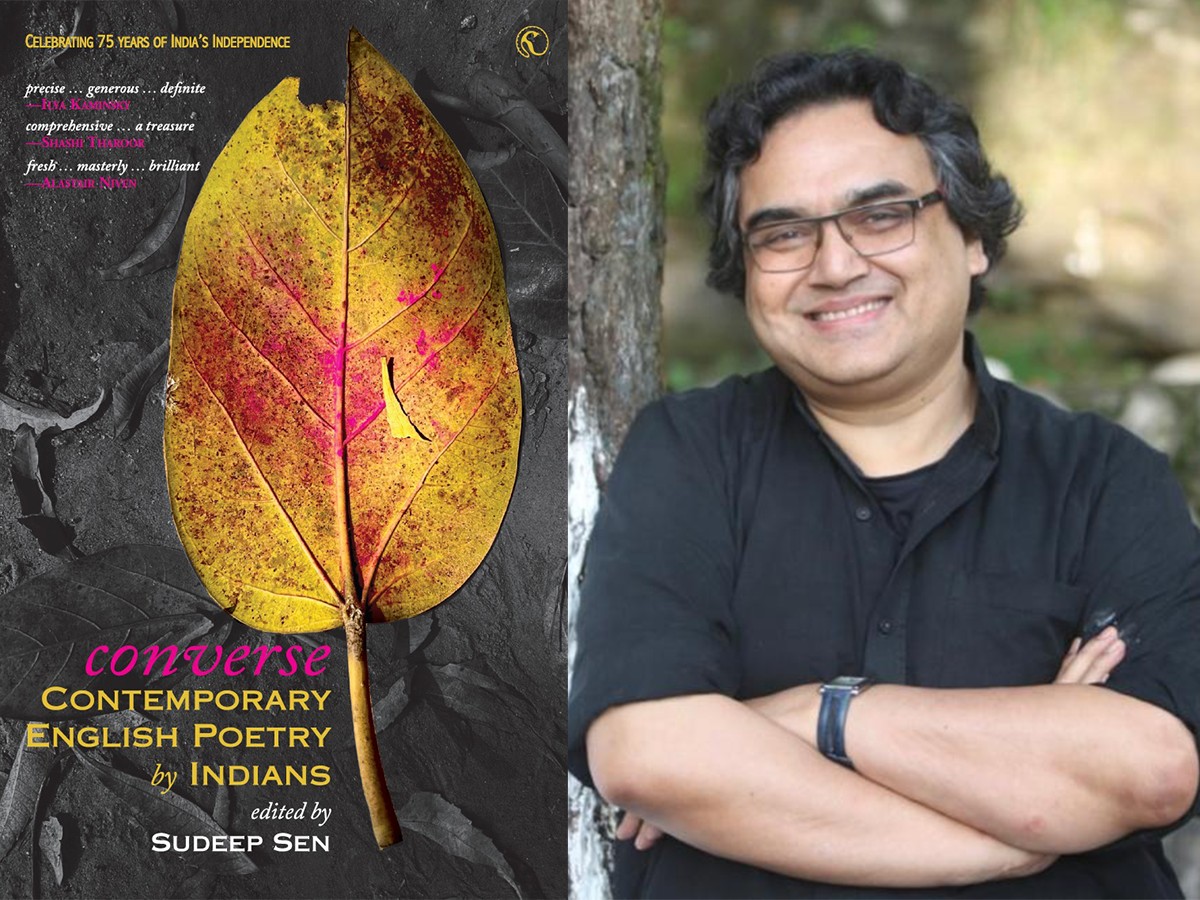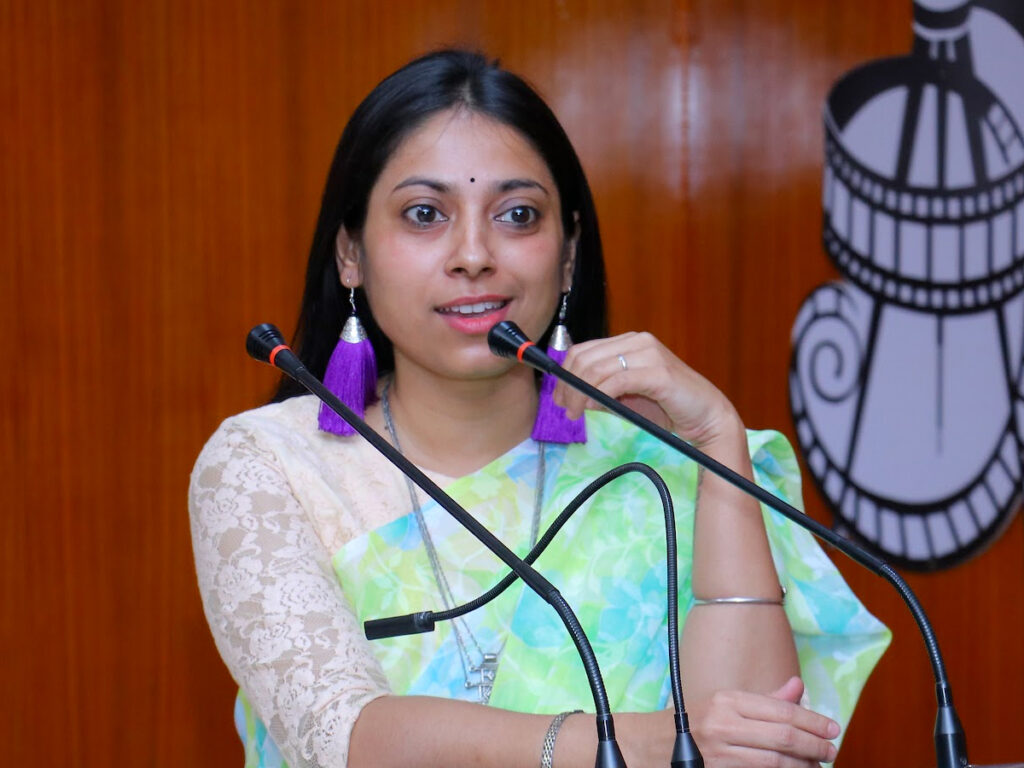

Converse: Contemporary English Poetry by Indians (Pippa Rann Books UK), edited by poet and artist Sudeep Sen, is a celebration of India’s rich and diverse Anglophone poetic tradition. The anthology was commissioned to commemorate India’s 75th year of Independence. It is a tour de force spreading over 616 pages, with 116 poets and 704 poems— culled from 15,000 pages of submissions. The book showcases an evolved influence of English language on Indian literature, culture and imagination.
Converse is modern, chic, experimental and ambitious; an intellectual narration of a nation, as imagined by poets residing in India and the Indian Diaspora. Converse is premised on the Indic tradition of the “guru-shishya parampara.” Converseopens with poems by Jayanta Mahapatra, born in 1928, first Indian poet (in the English language) to have won the Sahitya Akademi Award for poetry. Similarly, the final poems are by Supriya Kaur Dhaliwal, born in 1995, the youngest poet in the anthology. Sudeep Sen writes in the Introduction, “In varying degrees, the literary mentorship tradition has been of immense personal benefit to me—from senior Indian poets such as Mahapatra, Nissim Ezekiel and Dom Moraes; from Nobel laureates such as Derek Walcott, Joseph Brodsky and Seamus Heaney.” In this sense, Converse does not abide by popular anthology theories on power principles or personally determined hierarchies. The book aims to nurture a community of poets and value-added literary pursuits. It offers readers the brilliance and bravura of Indian poetry in English, nationally and internationally.
In Converse, one will find an astonishing range of free verse and “a penchant for formal verse like the pantoum, ghazal, canzone, sestina and sonnet” (Sen, Introduction) among others. The poems capture the vivid social, cultural, political, racial, intellectual, digital and literary heterogeneity of the nation. The selected pieces are not only pleasurable, but discursive engagements with ideas that are creative, yet disruptive; far-fetched,yet everyday.
Jayanta Mahapatra’s poems, ‘Dawn at Puri,’ and ‘Hunger,’ break upon the starkness of common life with nuanced beauty:
Endless crow noises. / A skull in the holy sands/tilts its empty country towards hunger.
Saleem Peeradina seeps into the soul of a Stapler. Sudeep Sen’s Hope: Light Leaks, stops by racial discrimination, “In this blackness, lives matter.” The ravages of COVID-19 and lock down are a popular preoccupation, among poets like Manohar Shetty, Amit Shankar Saha and others. In this context, Malachi Edwin Vethamani’s poem, Reading Tennyson on Pandemic Days marks a difference. Mamang Dai’s The River explores the mythical extensions of the river with beauty and compassion, River of all our summers/Collecting the salt of our lives. Mihir Chitre’s A Ghazal for Peace highlights the contemporary cancel culture of digital media; Ankush Banerjee weighs the heavy load of nostalgia and a soldier’s desire for home in Indian Soldier’s Rucksack: A Sketch. Raman Mundair’s controlled efficiency in the poem, 15 ways of looking at a silk saree, strikes a difference. Tenzin Tsundue’s When it rains in Dharamsala is notable for its conceit and beauty, When it rains in Dharamsala/raindrops wear boxing gloves Rafique Kathwari’s In Another Country, evokes an Agha Shahid Ali like nostalgia for homeland and belonging, In Kashmir, half-asleep, Mother listens to the rain. In Manhattan, I feel her presence in the rain.
Anthologists have limited tools such as abridging, compiling or excerpting. Sen’s approach as the editor seems to treat each poem as a bridge, connecting one poet to another, margins to mainstream, local to global, nature to culture, indigenous knowledge to technical progress, isolation to social media storms, submission to dissent, and living to loving. The book attempts to be a comprehensive dialogue on human experiences — intrinsic and pervasive.
Like all anthologies, the position of Converse within the canons of Indian literature in English remains debatable. However, the book offers an intellectually wholesome reading experience. The touchstone of any significant anthology lies in its ability to offer a transformative experience to the reader. The reader too becomes an anthologist, a collection of memories, ripe enough to be realized within newer paradigms of writing and comprehension.
The uniqueness of Converse lies in its unassuming approach. It does not attempt to be a grand narrative but a collection of micro-narratives on blooming shoots of consciousness of the growing nation. The book brings together poets separated by time and space, yet united by their skill at language, and their innate belief in poetry as the truest representation of India at seventy-five.
Dr Jhilam Chattaraj is Assistant Professor, Department of English and Foreign Languages RBVRR Women’s College, Hyderabad



